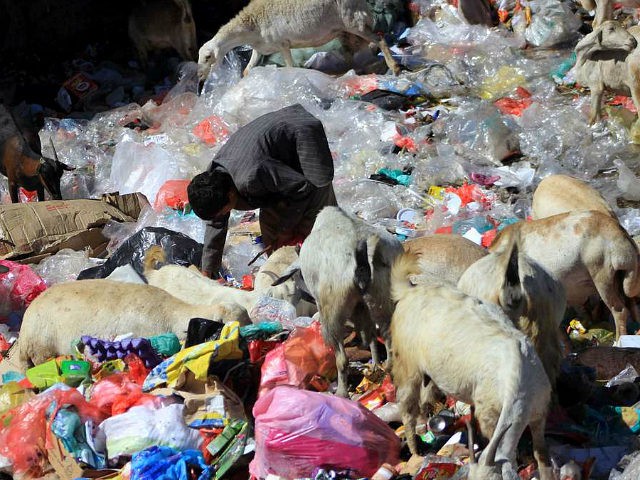Residents of war-ravaged Yemen, one of the poorest countries in the Middle East, are facing yet another problem — the management of toxic trash that is posing a looming threat to the health of the people in the country’s ancient capital of Sanaa, home to a UNESCO World Heritage site.
“It requires expertise and an immediate resolution, otherwise… Sanaa will disappear from the map,” declared environment professor at Sanaa University Khaled al-Thor, according to Reuters.
Sanaa residents are confronted by an imminent disaster as “a colossal pile of waste outside” sits outside the city, “leeching toxic waste into its diminishing water supply,” reports the news agency, noting that the city is expected to be the first capital to consume all of its water.
The pools of contaminated waste contain “hazardous chemicals that could cause a variety of diseases including cancers, birth defects, immunological disorders and many other diseases,” warned Professor Mohammed al-Qahali, chief of the science and technology department at Sanaa University.
Clashes between forces loyal to the internationally-recognized Yemeni President Abdrabbuh Mansour Hadi and Iran-allied Shiite Houthi rebels escalated into an all out war across the country around June 2014.
Soon after the Houthis, backed by armed groups linked to Yemen’s former President Ali Abdullah Saleh, captured the capital from the Hadi government, a U.S.-backed Saudi-led coalition launched an offensive in March 2015 to restore the leader to power.
Repeated United Nations-backed efforts to stop the ongoing war have failed.
“Residents living near the growing heap have seen their lives become more unbearable,” notes Reuters.
According to the UN, nearly 19 million of Yemen’s 28 million people are in need of some sort of humanitarian aid due to a near-total blockade of the country’s ports and ongoing fighting that have devastated the economy and left residents disease-stricken and hungry.
“The main problem we’re now facing is in the management of waste in Yemen that is posing a real danger to the general health of residents,” professor al-Qahali told Reuters.
Sanaa has fallen apart in the last two years of unrelenting war.
“There’s trash everywhere. The roads, even the main streets, are full of holes, some completely without asphalt,” reported ABC News in October. “Passersby look sad and cautious. Many don’t have access to clean water or enough to eat. Some beg for food, while others are too proud to ask. Instead, they go out at the end of the night, looking for leftovers in the trash.”
The Yemeni’s capital old quarter, known as the Old City of Sanaa, has been inhabited for more than 2,500 years, according to the UNESCO.
“In the 7th and 8th centuries the city became a major center for the propagation of Islam,” notes the UN component. “This religious and political heritage can be seen in the 103 mosques, 14 hammams [public baths] and over 6,000 houses, all built before the 11th century.”
In June 2015, UNESCO director general Irina Bokova referred to the historic site as “one of the world’s oldest jewels of Islamic urban landscape,” adding, “I reiterate my call to all parties to respect and protect cultural heritage in Yemen.”

COMMENTS
Please let us know if you're having issues with commenting.